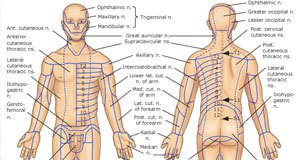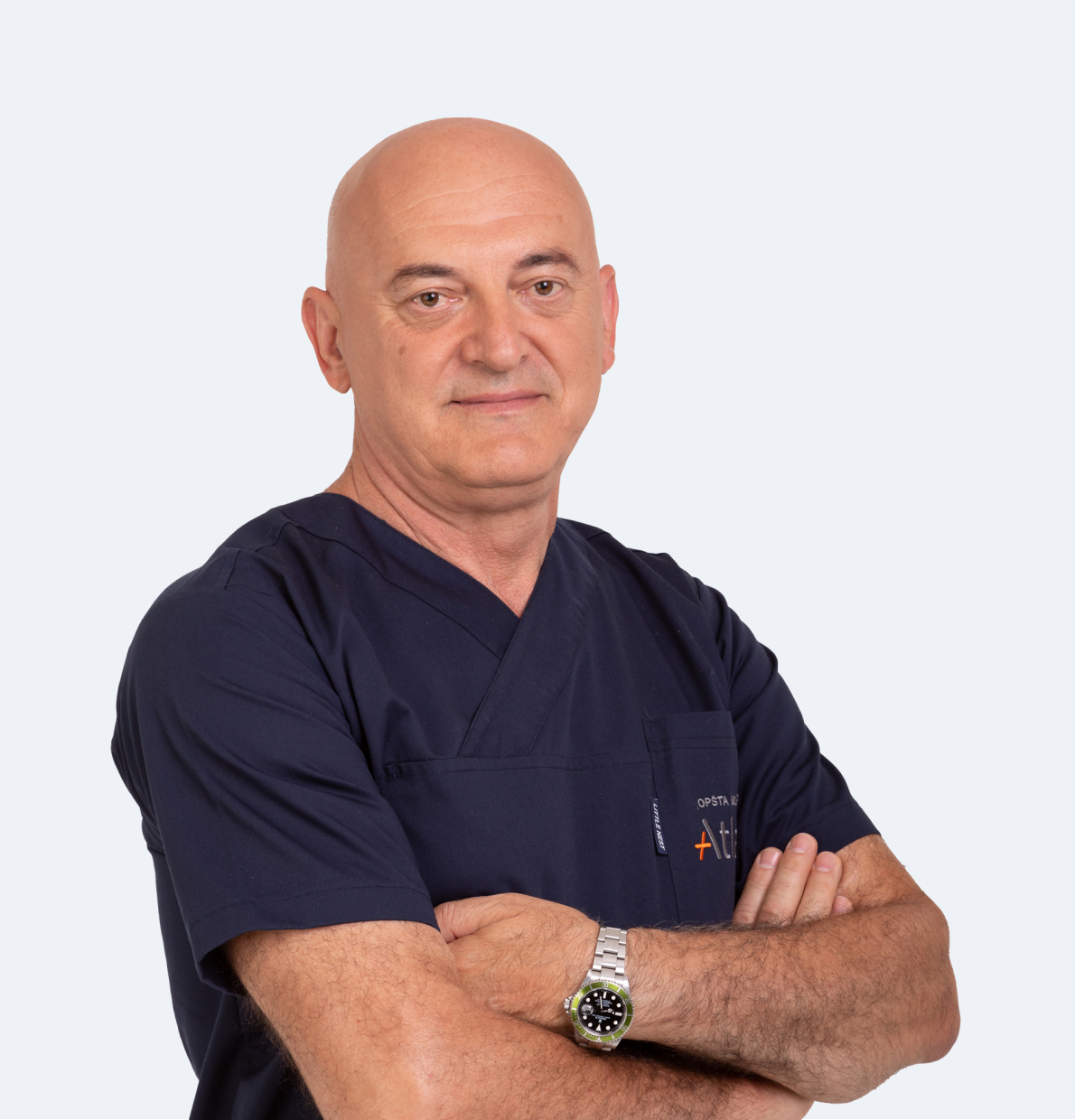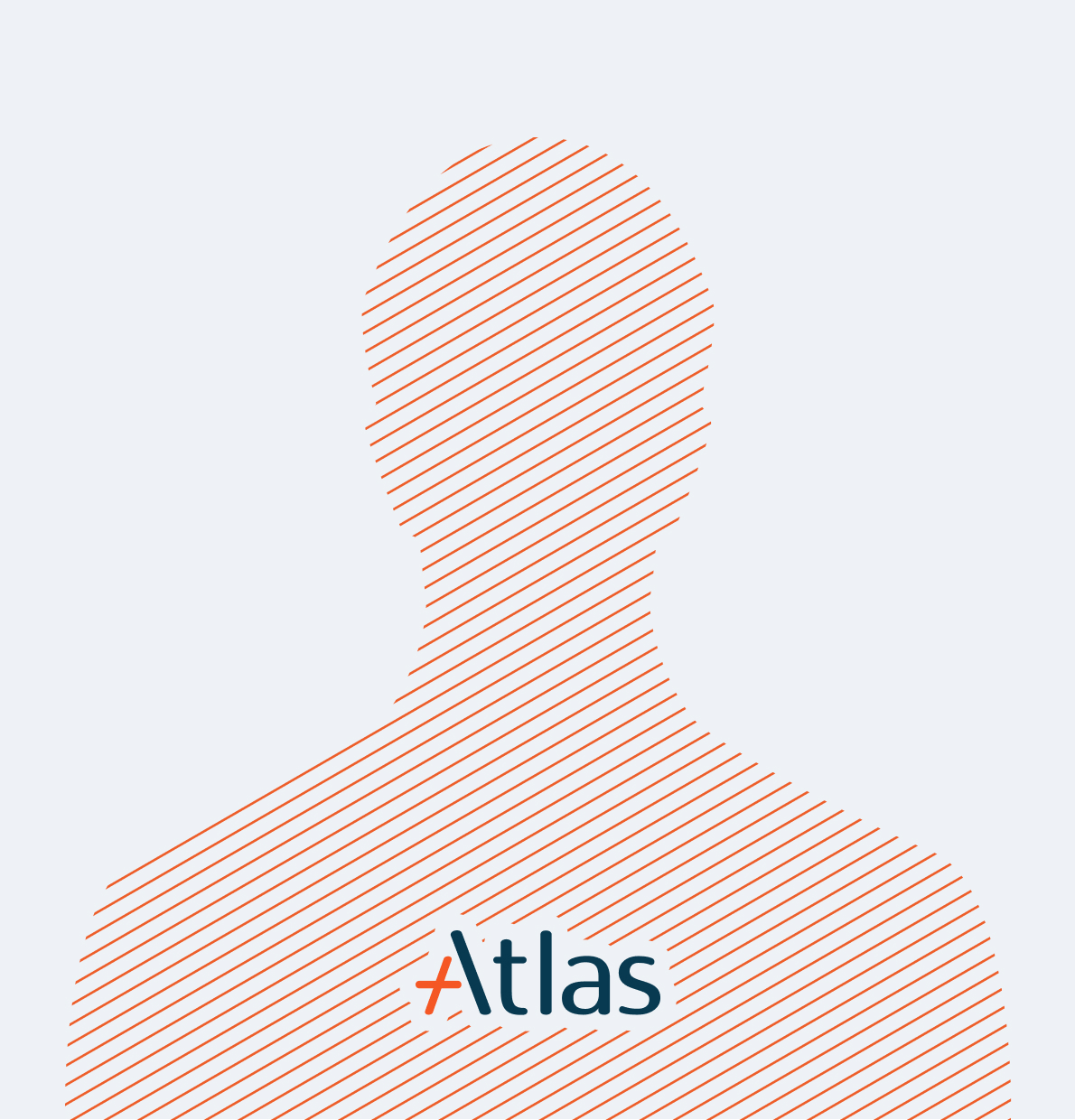Peripheral nerves are structures which connect spinal cord to targeted organs-muscles or different skin receptors which enable us to feel touch, hot-cold or pain.

When peripheral nerves are injured there is a weakening function of the muscle which in innerved by the injured muscle. Apart from that there is a diminished feeling for touch in the dermatome of the given nerve.
Dermatome is the part of skin from which the nerve receives impulses. Sensations like tingling (paraesthesia) may be the sign of damaged nerve.
Surgical treatment of peripheral nerves injuries and diseases have been performed in our country for more than 35 years.
The Atlas General Hospital is completely equipped for diagnosing and surgical treatment of peripheral nerves injuries and diseases and it offers the treatment at the highest world standards.
How is the procedure carried out?
In order to establish the right diagnosis and to carry out the adequate treatment, beside clinical examination which determines the extent of damage of the injured nerve, it is also necessary to do some diagnostic tests:
Electromyoneurographic (EMNG) is an examination to determine whether there is the damage of the peripheral nerve and the extent of the eventual damage.
The additional diagnostic methods which can be done are: MRI (magnetic resonance), CT (computerized tomography) and ultrasound examination.
There are several different peripheral nerve damages which can be treated surgically:
- Closed nerve injuries-injuries with or without arm and leg bone fractures
- Open nerve injuries- with clearly defined partial or complete nerve disruption
- Compressive neuropathies- Carpal canal syndrome, meralgia parestesis, Morton neuroma,etc.
- Peripheral nerve tumors- schwannoma, neurofibroma, ganglion cysts, etc.
The indication for surgical treatment and its timing depends more on the cause of the injury than on the extent of the nerve structure injury, which especially refers to the brachial plexus injuries.
Also, the right time of the surgical treatment is one of the main prognostic factors for the successful outcome. The ideal period for nerve reparation is 3 to 6 months after the injury.
The following neurosurgical techniques, depending on the extent of the nerve injury, are performed during these operations: decompression and nerve deliberation, external nerve neurolysis, internal nerve neurolysis, direct nerve suture, nerve transplatation and nerve transfer.
More serious injury is brachial plexus injury. Brachial plexus is a bundle of nerves in the shoulder region which transmits the impulses to all arm muscles.
These injuries are caused by traffic accidents (motorcyclists), fire arms injuries and on delivery.



